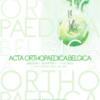Comparative analysis of different total hip replacement implants used in a single health region of the United Kingdom - minimum 15 years follow-up
Total hip replacement ; results
Published online: Jul 15 2019
Abstract
We describe the functional and radiological results at minimum 15 years follow up of four groups of total hip replacement(THR) implants used in our health region.
876 THRs in 837 patients who were included in the study that used prospectively collected data in the Tayside Arthroplasty Audit Group(TAAG) database. There were 387 Charnley/Ogee cemented THRs, 188 hips in the cemented CPT/ZCA group, 106 hips in the uncemented Bicontact/Plasmacup group and 195 hips in the hybrid Exeter/Trident group.
The most common complications were dislocation (3.88%) and superficial infection (3.76%). With revision surgery for any reason as the end point, the survivorship of at 15 years in our series was 98.45% in the cemented Charnley/Ogee THR group, 96.8% in the cemented CPT/ZCA group, 96.22% in the uncemented Bicontact/Plasmacup group and 97.94% in the Exeter/Trident hybrid THR group. There was no statistically significant difference in the number of hips at risk of revision, Harris Hip Scores and complication rates at 15 years.
We feel that the choice of implant is best based on individual templating and training of the surgeon. Prospective randomised controlled trials and joint registry data may make implant selection easier in the future.
